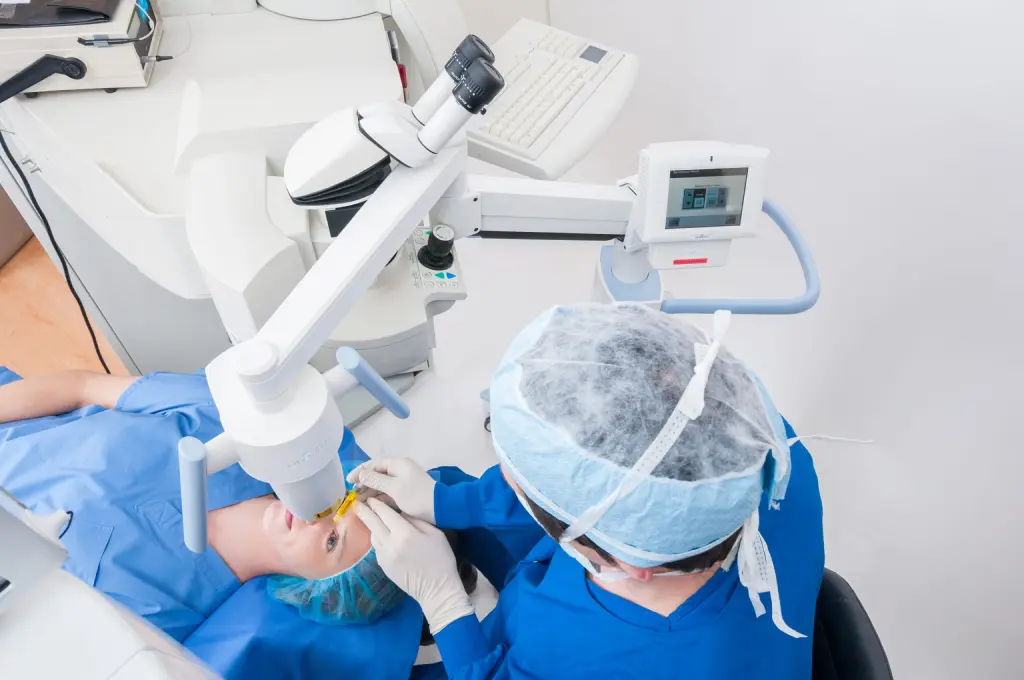Cross-Linking FAQ: Does Corneal Cross-Linking Help Vision?

If you’re considering corneal cross-linking to treat your progressive keratoconus, you likely have a list of questions you’ve discussed with your doctor or researched online. We want to help you feel as prepared and as comfortable as possible going into your procedure by answering your questions. One of the more common questions that we’ve seen from the Living with Keratoconus community is: Will corneal cross-linking help my vision? This is a great question, and it’s important that you are well-informed and understand the answer before scheduling your procedure! Below, we discuss whether iLink® FDA-approved cross-linking helps improve vision, and if corrective lenses will be needed. Continue reading for the answer to this question and to hear from a keratoconus expert.
Does Corneal Cross-Linking Help Vision?
iLink® FDA-approved cross-linking is a minimally invasive treatment option for people living with progressive keratoconus or corneal ectasia following refractive surgery. iLink® is proven to be safe and effective in slowing or halting the progression of keratoconus to help preserve vision. In clinical trials, patients who did not undergo cross-linking continued to progress, while on average patients who did undergo cross-linking did not progress.[1] [2]
Since iLink® FDA-approved cross-linking is not intended to improve vision, but rather to halt the progression of the condition, many people will need to wear corrective contact lenses following the procedure. Once progressive keratoconus is treated with iLink®, the goal is that people can be better fitted for contact lenses, with the goal that their new prescription will not change as frequently when progression has been slowed or halted.
For those who are living with keratoconus and are interested in trying contact lenses to improve their vision following iLink®, there are various options available, including soft contact lenses and Rigid Gas Permeable (RGP) lenses. Scleral lenses are a type of RGP contact lens that people with keratoconus often use. These lenses, which are made of durable plastic that can transmit oxygen, are larger in diameter than other RGPs and are designed to cover the entire cornea, plus a portion of the white of the eye. If you’re considering getting iLink® to slow or halt the progression of your keratoconus, talk to your doctor about being fitted for scleral lenses to improve your vision after the procedure.
What Does a Keratoconus Expert Have to Say?
Still not sure if iLink® is right for you to treat your progressive keratoconus? Discuss the risks and benefits with your doctor today. Also, one of our keratoconus experts, Dr. Jack Parker, M.D., Ph.D., of Parker Cornea in Birmingham, Alabama, shares more information on the topic below.
“iLink® is the only FDA-approved platform for corneal cross-linking in the country. This technology has been revolutionary for our practice, for our patients with progressive keratoconus, and for their families. Incredibly, keratoconus has been transformed, from a relentlessly progressive and potentially blinding disease to a condition that can be effectively slowed or halted, often with a single iLink® cross-linking treatment. This has been a truly revolutionary change in the management and prognosis of this progressive disease. After cross-linking, often with the assistance of other new technologies like scleral or implantable contact lenses, progressive keratoconic patients may often now enjoy excellent and in fact “normal” vision, and get back to living their best lives.”[3]

Taking the Next Step
If you have progressive keratoconus, iLink® may be the right treatment option for you. While everyone’s experiences are different, after undergoing FDA-approved cross-linking to slow or halt the progression of your keratoconus, it’s likely that your vision can be improved with the use of contact lenses – allowing you to live your life without worrying about your eyesight! [3] [4]
Remember to discuss the iLink® procedure with your doctor to determine if it may be right for you. If you’re looking for a corneal expert in your area, you can use our physician locator tool. You can also connect with others in the keratoconus community who may be going through a similar experience. Don’t forget to follow us on Facebook, Twitter, and Instagram for more information on keratoconus and iLink® FDA-approved cross-linking.
Resources
[1] Hersh PS, Stulting RD, Muller D, et al; U.S. Crosslinking Study Group. S. Multicenter Clinical Trial of Corneal Collagen Crosslinking for Treatment of Corneal Ectasia after Refractive Surgery. Ophthalmology 2017;124(9):1475-84.
[2] Hersh PS, Stulting RD, Muller D, et al; U.S. Crosslinking Study Group. United States Multicenter Clinical Trial of Corneal Collagen Crosslinking for Keratoconus Treatment. Ophthalmology 2017; 124(9):1259-70.
[3] Kreps, E. O., Pesudovs, K., Claerhout, I., & Koppen, C. (2021). Mini-Scleral Lenses Improve Vision-Related Quality of Life in Keratoconus. Cornea, 40(7), 859–864.
[4] Baudin, F., Chemaly, A., Arnould, L., Barrénéchea, E., Lestable, L., Bron, A. M., & Creuzot-Garcher, C. (2021). Quality-of-Life Improvement After Scleral Lens Fitting in Patients With Keratoconus. Eye & contact lens, 47(9), 520–525.